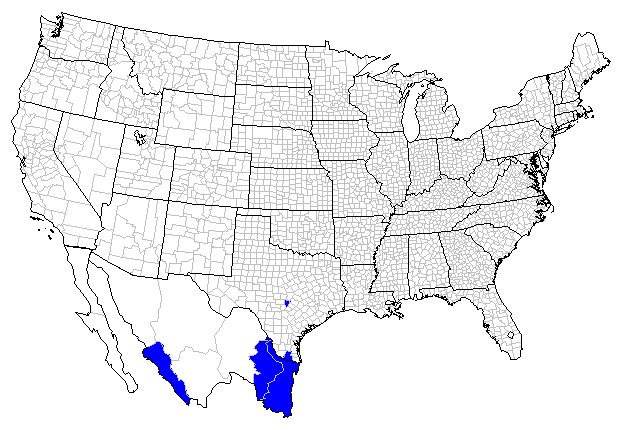 |
 

 |


Mexican Cycadian (Eumaeus toxea [Godart])
Wing span: 1 1/4 - 2 inches (3.2 - 5.1 cm).
Identification: Abdomen upperside is black, below is red-orange. Upper surface of wing black covered with iridescent blue. Underside black; hindwing with rows of iridescent blue spots and one red-orange spot.
Life history: Eggs are laid in groups of 3-8 under new leaves of host. Young caterpillars feed on the outer layer of the leaf.
Flight: Many flights in Mexico, from April-December.
Caterpillar hosts: Cycads.
Adult food: Not reported. May include bird droppings.
Habitat: Tropical woodland.
Range: Honduras north to Mexico. Rare in South Texas, one stray to Florida.
Conservation: Not necessary for rare stray.
The Nature Conservancy Global Rank: GU - Unable to assign rank due to lack of available information.
Management needs: None reported.
References:
Opler, P. A. and V. Malikul. 1992. A field guide to eastern butterflies. Peterson
field guide #4. Houghton-Mifflin Co., Boston. 396 pages, 48 color plates.
Scott, J. A. 1986. The butterflies of North America. Stanford University Press,
Stanford, Calif. 583 pages, 64 color plates.
Author: Jane M. Struttmann

